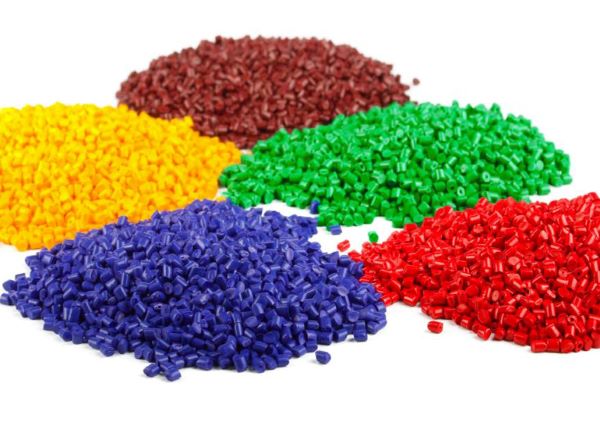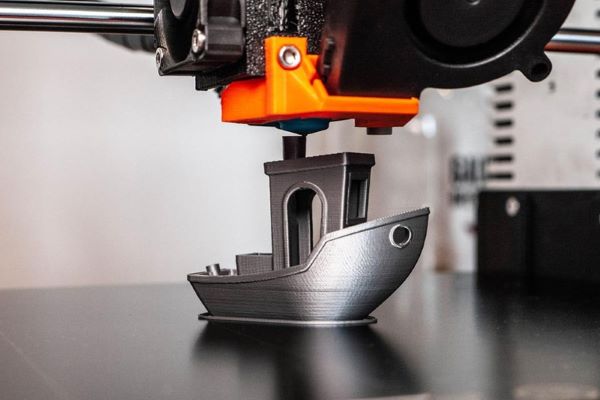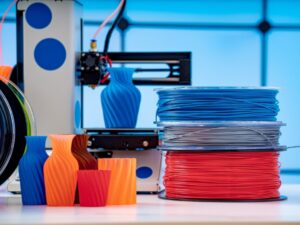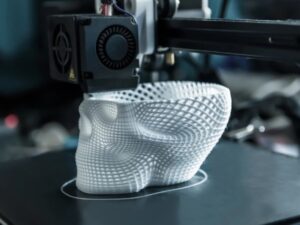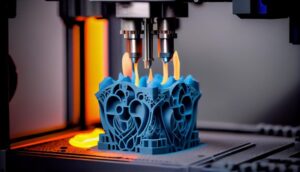What is Blender, and why is it so popular among 3D designers, animators, game developers, and architects? Blender is a completely free, open-source 3D graphics software that boasts a powerful feature ecosystem comparable to expensive commercial tools. With capabilities in modeling, sculpting, visual effects creation, video editing, and high-quality rendering, Blender has become the ideal choice for both beginners and creative professionals around the world.
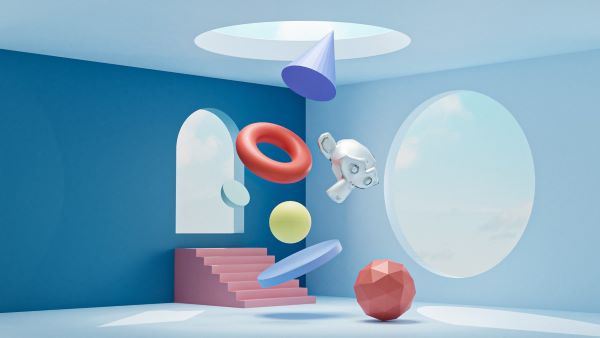
What is Blender?
Many people wonder what kind of software Blender is. Blender is a free, open-source 3D graphics design software widely used in various fields such as animation production, visual effects, 3D printing prototyping, digital art design, and video game development.
The software was first released in January 1994 by NeoGeo, a Dutch company, originally developed for internal use. The man behind the project is Ton Roosendaal, a programmer and co-owner of the company. The name “Blender” was inspired by the album Baby by the band Yello.
Over more than 28 years of development, Blender has overcome numerous challenges, including the dissolution of both NeoGeo and its successor, Not a Number Technologies. Despite these setbacks, Blender has grown significantly and is now a thriving open-source software project supported and continuously developed by a global community.
Blender features a wide range of powerful tools, including 3D modeling, smoke, fluid, and particle simulation, character rigging, animation, rendering, and video editing. Et’s take a closer look at its key features below.
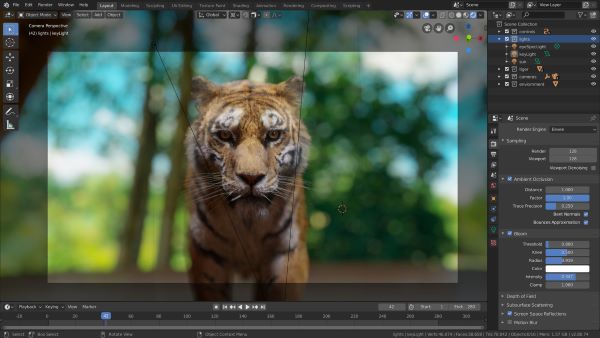
What are the key features of Blender?
Blender is not only a free 3D design software but also stands out with its powerful feature ecosystem, meeting a wide range of creative needs. Below are the standout capabilities that make Blender a favored tool among graphic designers and filmmakers.
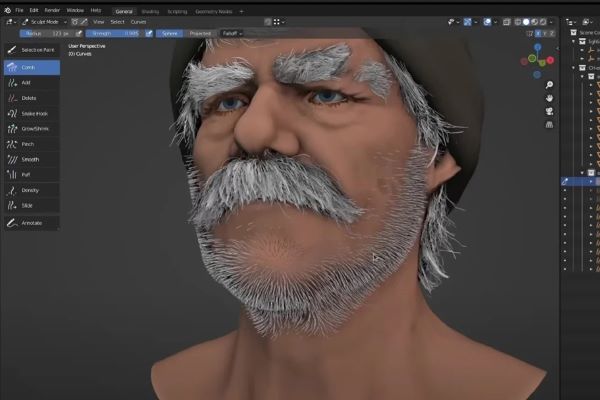
3D modeling and sculpting support
Blender provides a comprehensive set of tools for flexible 3D modeling and sculpting. For highly detailed objects, users can easily manipulate geometry using tools like “grab,” “push,” or “smooth.” Convenient keyboard shortcuts allow for quick switching between work modes, optimizing the design workflow.
Dynamic visual effects creation
Beyond modeling, Blender supports the creation of stunning dynamic visual effects. The software enables everything from motion tracking and compositing to lighting, smoke, and fire effects, as well as combining animated layers. This adds depth and realism to film, advertising, or game projects.
Professional video editing and rendering
Blender features a powerful built-in video editor, allowing users to cut, post-process, and render videos within the same platform. This makes Blender an all-in-one solution for content creators, streamlining the production process and saving time.
Optimized UV Mapping and Unwrapping
Blender supports robust UV unwrapping features that allow users to flatten 3D surfaces for accurate and intuitive texturing. Users can easily adjust parameters such as transparency, diffusion, ambient lighting, and reflectivity to create vivid, high-quality surfaces. This feature is especially valuable for preparing textures before 3D printing or integrating into virtual environments.
What are the advantages and disadvantages of Blender?
Blender stands out not only for its powerful 3D design capabilities but also for a wide range of outstanding advantages compared to many similar software programs. However, alongside these significant strengths, Blender also has certain limitations that users should consider.
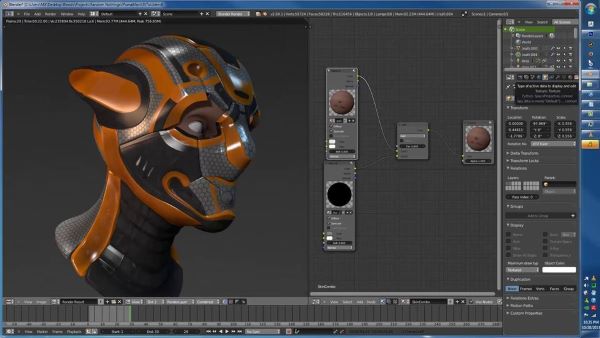
Advantages of blender
- Completely Free: Blender is a free 3D graphics software with no licensing fees, making it accessible to all types of users.
- Powerful Features: It supports real-time viewport rendering, node-based materials, sculpting, 3D texture painting, and a wide range of built-in visual effects.
- Programming Support: Blender can read and execute Python scripts, making it easy to customize and extend functionality.
- Lightweight and Fast: Compared to other popular software like AutoCAD, Blender has a smaller file size and significantly faster processing.
- Open Source: Users with programming knowledge can freely develop or modify the software to suit their individual needs.
- Multi-Format Compatibility: Blender supports a wide range of file types, enhancing connectivity and flexibility in workflows.
- Strong Community: A large and active user community offers extensive resources, tutorials, and technical support.
Disadvantages of blender
- Lack of specialized depth: Although Blender offers a wide range of features, each feature may not be as in-depth or advanced as those found in specialized software.
- Limitations in professional environments: Blender may not be suitable for projects that require high commercial standards or large-scale production environments.
Applications of blender across various fields
Blender is not only renowned for its powerful 3D design capabilities but also serves as a versatile tool supporting a wide range of creative industries. Below are some of the most notable real-world applications of Blender.
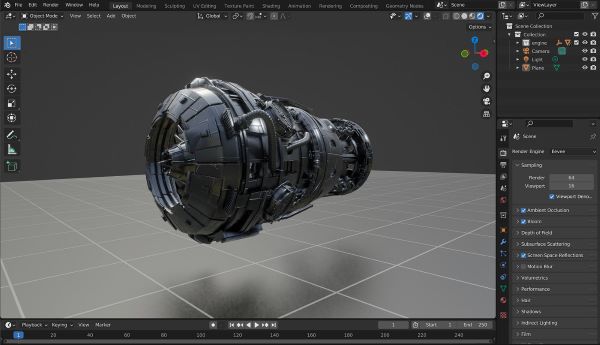
Game design
Blender is a powerful tool for creating 3D models and environments for video game projects. Assets developed in Blender can be easily exported to game engines like Unity or Unreal Engine, streamlining workflows and enhancing the final product’s quality.
Animated filmmaking
Blender has been used in many well-known animated films thanks to its comprehensive capabilities, from modeling and animation to scene rendering. By integrating these tools into a single platform, Blender reduces production costs and optimizes time for directors, animators, and content creators.
Architecture and interior design
Blender is widely trusted by architects and interior designers due to its ability to produce accurate models and highly realistic renderings. The software allows users to vividly visualize concepts, improving presentation effectiveness and making it easier to convince clients during project proposals.
Character and 3D model creation
Blender is an ideal choice for developing characters and 3D models in digital art or commercial projects. With advanced sculpting tools and high-detail rendering capabilities, artists can create intricate and highly realistic models with precision.
What is Blender? Blender is not just an open-source and completely free 3D design software it is a versatile tool used across various creative fields, including animation, visual effects, architecture, game development, and video post-production. With a user-friendly interface, a vast and active community, and a constantly evolving feature set, Blender is becoming the go-to choice for both beginners and seasoned professionals in the creative industry.
Turn 3D Designs into Real Products. Once you’ve completed your 3D designs with Blender, are you looking to turn your ideas into tangible products? Let 3Dmanufacturer (3Dm) support you. As a leading provider of 3D printing, 3D scanning, and CAD/CAM software services, 3Dm enables you to get quotes and place orders online in just a few steps.
Operating the largest 3D factory in Vietnam with a facility over 1,200m² 3Dm is equipped with multi-technology 3D printers (SLA, SLS, FDM), CNC machines, and modern finishing equipment. As a result, 3Dm can manufacture everything from technical prototypes to functional parts, even in small quantities, without mold investment saving you both time and cost.


